Your Guide To Keeping Your House Cool Naturally
- Home
- Articles Posted by (
- Page 10 )
[Post Date]
Your Guide To Keeping Your House Cool Naturally

2019 is a year unlike any other – it is the warmest year on record for Singapore, and Q3 is our driest yet. This year may also one of the world’s hottest year on record. It is hard to fathom who is actually going to buy Uniqlo’s autumn 2019 collection.
Nevertheless, to help us stay cool and combat the heat, we at Geneco have not only been doing our part to go sustainable, raise awareness for sustainable energy, but also gave you some ideas how to make good use of the time spent under shelter.
In this article, we go a step further to share how you can use a little creativity, artistic flair and MacGyver-esque science to cool your house naturally.
Get The Right Curtains

Many things in the house are natural heat-trappers, such as beds, cushions and even certain floor tiles. Having the right curtains and pulling them across the windows at the right time of day can reduce heat from sunlight by 30%.
When choosing curtains, opt for:
- Blackout curtains | Made of fabric that is foam-backed, opaque and extra-woven to block out light. Ideal for the bedroom and midnight shift workers.
- Reflective curtains | Reflect sun rays back out the window instead of absorbing them. Durable and cost-effective.
- Multi-layered curtains | Layered curtains are great at blocking sunlight. The layers consist of light lace for the evening and thicker layers to block out sunlight by day.
- Light-coloured curtains | Curtains with light colour not only block out heat but are also good at reflecting heat. Colours like white, cream and peaches are great while colours like black, dark green and navy blue are not.
- Fabrics that block sunlight | Cotton is great for blocking heat out thanks to its thickness, yet porous to allow ventilation. One of the best fabrics for curtains. Velvet is thick and close-weaved, meaning it is an excellent fabric for blocking sunlight.
- Lightweight blinds | If curtains are not working out for you, blinds are excellent choices that look good and work well. Usually made of plastic, aluminium or wood, blinds are not only opaque when fully shut and allows for ventilation when slightly opened, but the materials also do not conduct heat.
Cool Shades For The Home

Most new HDB come with tinted windows that help shield us some excess sunlight. However, if yours is an older flat with no tinted windows or you want more sunlight blocking, window films are relatively cost-effective for that. Make sure to get window films that are tinted adequately and has UV ray protection to maximise your home cooling efforts.
You can double it up by using UV-deflecting glass. You will want to look for features like double-glazing, low e-coating and argon fills for the best heat- and UV-blocking power.
Go Green, Literally

We don’t just mean being more environmentally conscious. Plants are the underrated champions for being effective home cooling tools that look good! Some plants that outshine others at the cooling department include:
- Ficus benjamina | keeps air moist and cool. Choose one with a tall trunk and bushy top to act as a canopy over other plants below or around it. Grouping plants together can pleasing to look at and create a natural “home cooling system”.
- Reflective curtains | Reflect sun rays back out the window instead of absorbing them. Durable and cost-effective.
- Palm | Nothing makes air more refreshing than fresh oxygen. Palm boast of large overall leaf surface area that helps it give off more oxygen.
- Mother-in-law’s tongue | The verbal prowess of an angry mother-in-law is much dreaded. However, the mother-in-law’s tongue plant is soothing both at night and day thanks to its ability to release oxygen and provide fresh relief round the clock. The leaves are also known to act as an air filter that removes airborne toxins such as benzene and formaldehyde.
Hyperventilate, But For Your Home

When saving on electricity bill and going all natural, ventilation is key. A well-ventilated home comprises of windows or doors at each end of the apartment to form an air tunnel.
If you are looking for a new home in Singapore, look out for such features. If you have just gotten your new BTO flat (congrats!) and are drawing up your interior sketches, make sure your designs optimise airflow by keeping the passages clear – stagnant air can make your home feel stuffy.
In addition, the roomier your home is, the better for air circulation. You may want to knock down some walls and enlarge spaces like the living room, where they tend to have more heat-producing electrical appliances and people.
Ceiling fans are a must for anyone who prizes ventilation. Ceiling fans are very efficient in keeping air moving around larger rooms while using less energy than the AC or multiple standing fans.
Don’t Let Your Home Become A Sauna

Singapore’s weather is not only warm but humid too – humidity can make your home feel warmer than it reads on the thermometer. To deal with the excess moisture in the air, a dehumidifier makes the air less moist to allow sweat to evaporate faster.
Cool Off Without Burning Through Your Cash
Beyond these neat tricks to stay cool, our Get It Fixed 24 and Get It Fixed 36 plans can help take the heat off your household expenditure by offering fixed competitive rates for the next few years. So rest easy, no sweat on your brows and don’t sweat on the bills.
References:
- Elangovan, N. (2020, June 5) Singapore households generated additional 1,334 tonnes of plastic waste during circuit breaker: Study, Today Online.
https://www.todayonline.com/singapore/singapore-households-generated-additional-1334-tonnes-plastic-waste-during-circuit-breaker
Image Credits: Nylon Coffee Roasters
Source: The Sustainability Project
Why The Race For Sustainable Energy Is So Critical Today
- Home
- Articles Posted by (
- Page 10 )
[Post Date]
Why The Race For Sustainable Energy Is So Critical Today

Today’s economies, societies and human civilisation as we know it run on fossil fuel. The dependence on coal, oil and gas has given rise to an extraordinary and critical moment for the future of all who call Earth their home.
Many signs have pointed to human activities as a key contributor to a warming climate – more frequent and powerful storms, melting glaciers, receding permafrost, longer and harsher droughts, and an increased sense of anxiety across societies as hunger and thirst drive unrest and migration as a result of the chronic burning of fossil fuels, deforestation and emission of greenhouse gases by industry, just to name a few.
As noted by the global community, the need to bring about radical transformation in energy production and consumption is now more urgent than ever.
The Great Bake Off
While there are natural contributors behind Earth’s warming, there is also strong evidence suggesting mankind’s culpability. Since the Industrial Revolution began, mean temperatures have been rising, as seen in readings across the globe.
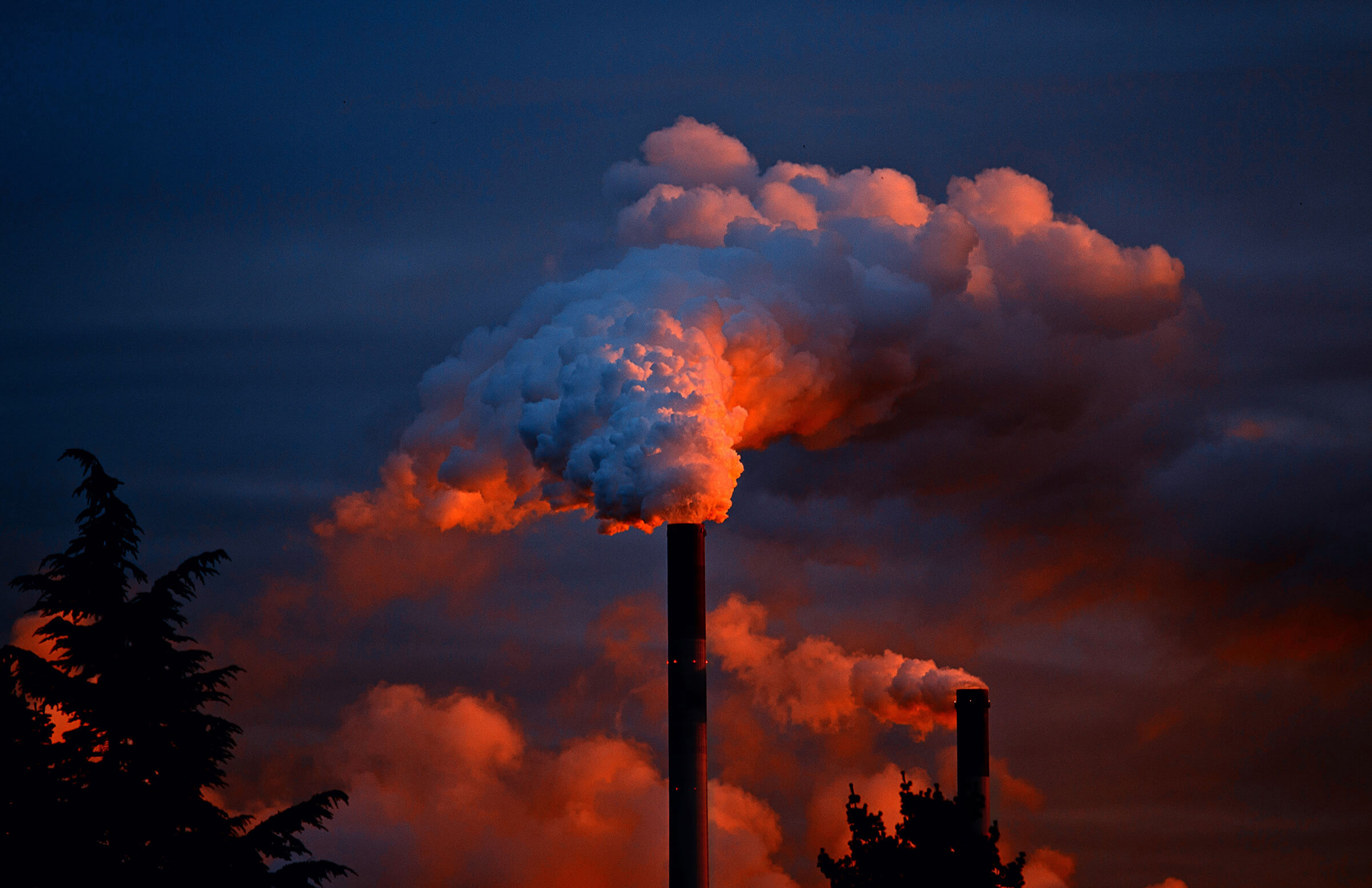
Ongoing temperature analysis conducted by NASA’s Goddard Institute for Space Studies (GISS) indicates that the mean global temperature on Earth has increased by about 0.8°C since the late 1800s, of which the majority of Earth’s warming happened post-1975 at a rate of 0.15-0.20°C per decade.
A 1°C change in average global temperature carries a different significance than when you turn up your AC by 1°C. A single degree change is significant because it takes an enormous amount of heat to warm the whole planet with its oceans, atmosphere and land. A 5°C drop is enough to plunge us all into Ice Age.
Global warming presents a whole host of serious effects, among which include:
- Glacier retreats and melting ice sheets at the poles threaten natural habitats and cause sea levels to rise, endangering coastal societies and low-lying landmasses
- Fiercer and more frequent extreme weather like floods, droughts, heatwaves, cyclones and storms make expose societies and ecology to greater vulnerability
- Warming oceans do not trap CO2 well, becoming less effective as a heat sink; also leads to acidification of the oceans, threatening marine life such as corals.
- Droughts and floods threaten crops and livestock, endangering food supply
- Drives human migration and can create cause for social and political unrest

Time Is Running Short
According to a report by the Intergovernmental Panel on Climate Change (IPCC), global temperatures could reach an irreversible tipping point in just 11 years if the global community fails to significantly reduce the amount of CO2 in the atmosphere and curb its release.
The researchers found that human-caused CO2 emissions need to reduce by half of 2010 levels before 2030 to avoid the worst and permanent effects of climate change. Quick, far-reaching and radical changes in every part of society will be needed to achieve that goal.
However, despite the growing consensus, the deployment of sustainable energy technologies and infrastructure has been slow and frustrated. In many cases, they are impeded by conflicts of national, economic and social interests around renewable energy installations such as wind turbines and solar farms. An example of how even differing views and priorities on environment protection can frustrate clean energy deployment is the upstream challenges faced by hydroelectric dam constructions, in which protecting wildlife and promoting clean energy can be at logger.
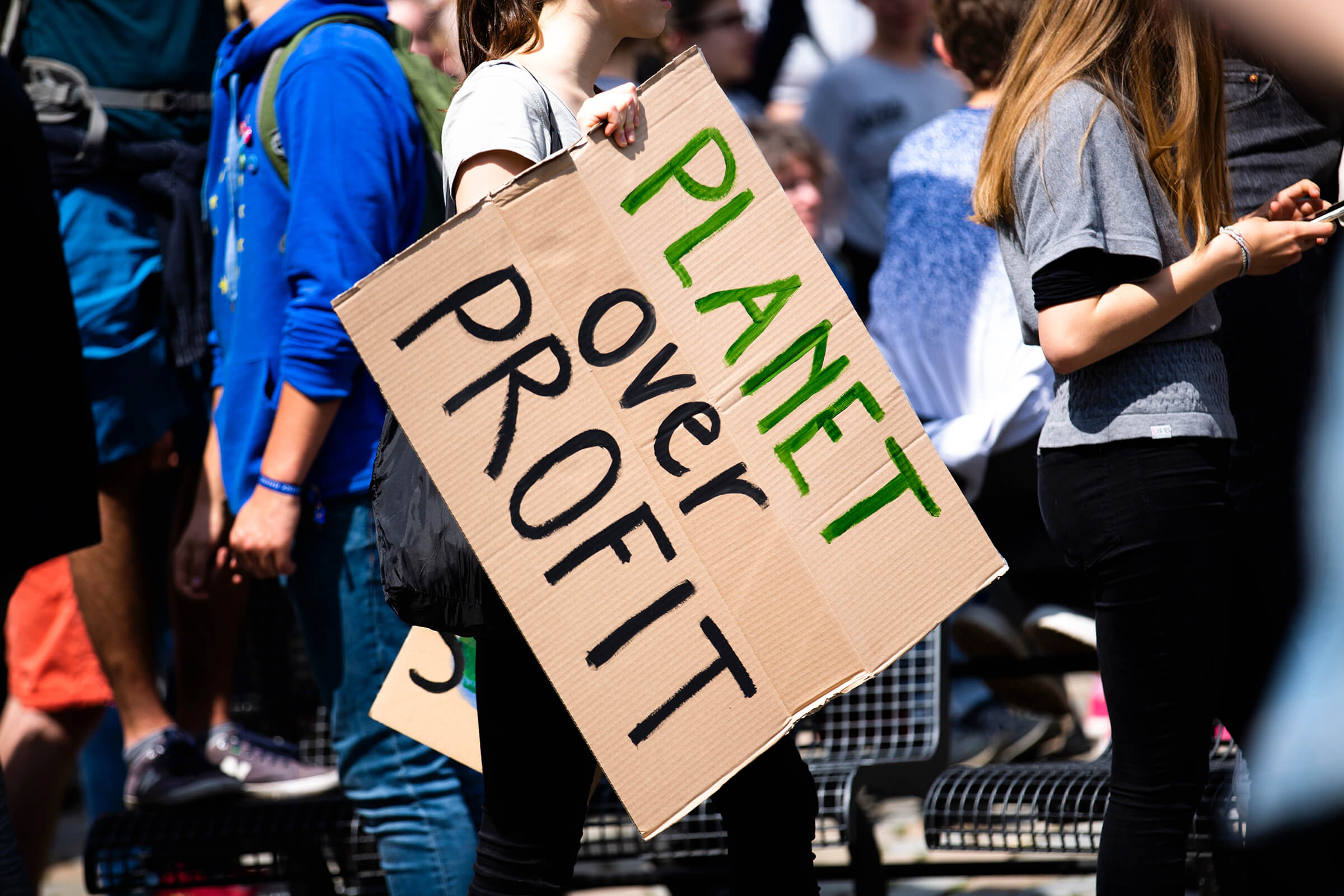
Singapore Does Its Part
In Singapore, we face uphill challenges in deploying renewable energy technologies no thanks to our small landmass, lack of fast-moving bodies of water and generally gentle winds.
Despite that, Singapore manages to make its mark in transforming our energy sector to be cleaner, environmentally conscious and more self-reliant, as well as transforming its citizens’ mindset to support sustainability and use energy wisely.
As described in our previous article, Singapore has deployed various sustainable energy solutions to chip in into the fight against climate change. With solar panels installed around the island such as on HDB rooftops and lamp posts, and a floating solar farm in the works, Singapore sees a bright future ahead in solar energy.
Doing our part, our parent company YTL PowerSeraya has already jumped onto the solar bandwagon with solar photovoltaic panels installed at our Jurong Island plant. In addition, we at Geneco provide our customers the ability to offset their carbon footprint and achieve net-zero greenhouse contribution.
The liberalisation of the energy market in Singapore has also motivated energy companies to research innovative ways to supply and retail energy to maximise profits and align with Singaporean’s gradual mindset shift towards sustainability. At Geneco, our plans are examples of how we are partnering our customers to be clean and green:
- Get Sunny plan allows users to consume 100% clean energy
- Get It Green plan offsets users’ carbon footprints as a result of their energy usage with carbon credits that help fund eco-projects
Moving Towards The Right Direction
It is evident that as more people become aware of climate change, demand for green alternatives increases and so do their tolerance for the inconveniences that come from a still-maturing industry. We see how public pressure has motivated fast-food chains to ditch plastics, retailers to use recycled materials, political parties to campaign on green issues and governments to adopt environmental policies.

The race for sustainable energy is for everyone. As more people are coming to terms with the fact that their ways of life fall short in investing wisely for the future of the planet, the sense of urgency to find solutions to address climate change grows. This then creates new demands, new opportunities in the market, and new hope for the future of our climate.
References:
- Elangovan, N. (2020, June 5) Singapore households generated additional 1,334 tonnes of plastic waste during circuit breaker: Study, Today Online.
https://www.todayonline.com/singapore/singapore-households-generated-additional-1334-tonnes-plastic-waste-during-circuit-breaker
Image Credits: Nylon Coffee Roasters
Source: The Sustainability Project
Beat The Heat And Do It Cheap
- Home
- Articles Posted by (
- Page 10 )
[Post Date]
Beat The Heat And Do It Cheap

2019 is on track to become one of the hottest years for Singapore and it was predicted to be so as early as March. Not only is the island baking, Earth is experiencing heatwaves sweeping across the planet too.
Singapore’s climate all year round can be so warm that we may just forget there are four seasons in a year. All we get is summer on this sunny island and while people in colder countries fly south for the winter, Singaporeans fly north to cool off. However, flying to a country with cooler climates is no cheap affair, and there is only so many vacation days you and your family can take.
We have compiled a list of wallet-friendly, fun-filled and relationship-building things you can do to keep yourselves cool without burning through your bank account:
1. All hail Netflix

Someone please nominate Reed Hastings and Marc Randolph for a Nobel Prize already, for bestowing upon mankind the power to watch (and binge-watch) our favourite shows and movie titles all in the comforts of our crib. Bonus points to you if you have got a high definition TV and surround sound to turn your home into a theatre.
A starter kit to some of the popular shows and genres:
- Educational documentary: Chasing Coral
- Childhood favourites relived: The Magic School Bus Rides Again
- Mind-blowing science fiction: Black Mirror
- Sci-fi with a little scare: Stranger Things
- Political thriller: Designated Survivor
Pssst…..An average 42″ high-definition TV uses around 80 Watts of electricity per hour, which translates into just 1 cent on our Get It Fixed 24 plan!
2. Board games to keep boredom at bay

If there is any credit to the heat, it is that it incentivises people to stay home. So, please do not let it go to waste by not seizing the opportunity to have your loved ones come around and enjoy some competitive fun!
If you have lost touch with your younger days where your clique would book a table at The Minds Café or Settlers Café, here are some board and card games ideas fun for all in the family:
- Nothing gives you constant mood swings (the fun kind) between adrenaline rush and the relief quite like Jenga. Pit your concentration skills and dexterity against one another and celebrate your opponent’s downfall.
- An all-time classic, Uno is the ultimate card game for endless fun fuelled by vengeance. In some kind of twisted way, you and your family members can build bonds by ‘sabo-ing’ each other with Draw-Two and Draw-Four cards and form temporary alliances against each other before ending them in betrayal.
- The Singaporean Dream is the perfect conversation starter and excuse of a game to ask awkward questions about one’s ambition. With character cards that depict stereotypical caricatures of different occupations assigned to players, each player must overcome other players’ political games and amass ‘dreams’ to win the game. Great way to motivate your kids to think about their dreams and talk about them!
3. Cook and bake together

Nothing unites Singaporeans more than our love for food and nothing tastes as good as home-cooked food. When everyone has a hand in preparing tonight’s dinner (literally), it gets even better.
Cooking together as a family is one of the ways family members build working relationships with one another. Go shopping for groceries together, discover and educate ingredients together, delegate roles in the kitchen and enjoy the fruits of everyone’s labour together.
Tip: It’s now possible to eat healthy and be kind to the environment, by buying organic, homegrown herbs and vegetables grown right here on the rooftops of Singapore’s high-rises. Watch our Changemakers video on ComCrop, and learn about how they are doing the planet a whole lot of good, the fresh, tasty way.
4. Spin the globe, virtually

Ok, so physically leaving the country may not be possible at this juncture, but you can still discover the world in your own home thanks to the Google Earth’s camera men.
‘Visit’ your favourite destination at a click of the finger and take ‘snapshots’ of the sights and scenery. Discover new places and things in the countries that are not on your immediate to-go list but are still worth checking out.
Just a bonus for you to kickstart your curiosity, type in 35.70407437075822, 139.5577317304603 in the Google Earth search bar and select street view.
5. Nurture the inner Picasso

While the heat is not painting a very good picture for the climate, you and your loved ones can paint masterpieces together! Revisit old favourites like Art Attack or learn a trick or two from Bob Ross on how to create artistic pieces. Let the kids explore every inch of their creative brains and unleash the Da Vinci in them.
Just a word of advice: if your kids are using paint brushes for the first time, go for watercolour – they are easier to clean in case of unbridled artistic mayhem.
Keep Cool With Our Cool Plans
While you and your family hole up at home with the AC on, your smart TV playing your favourite shows and the kitchen at full capacity for a dinner feast, we’ve got your electricity bill covered with some of the most competitive plans.
Staying home and staying cool has never been this fun and fruitful. Whether you are looking for the best plan to suit your energy needs or enjoy your home’s comforts without contributing to climate change, we are here to #powerthechange.
References:
- Elangovan, N. (2020, June 5) Singapore households generated additional 1,334 tonnes of plastic waste during circuit breaker: Study, Today Online.
https://www.todayonline.com/singapore/singapore-households-generated-additional-1334-tonnes-plastic-waste-during-circuit-breaker
Image Credits: Nylon Coffee Roasters
Source: The Sustainability Project
SG National Day Series: Sustainable Energy For A Secure Future In Singapore
- Home
- Articles Posted by (
- Page 10 )
[Post Date]
SG National Day Series: Sustainable Energy For A Secure Future In Singapore
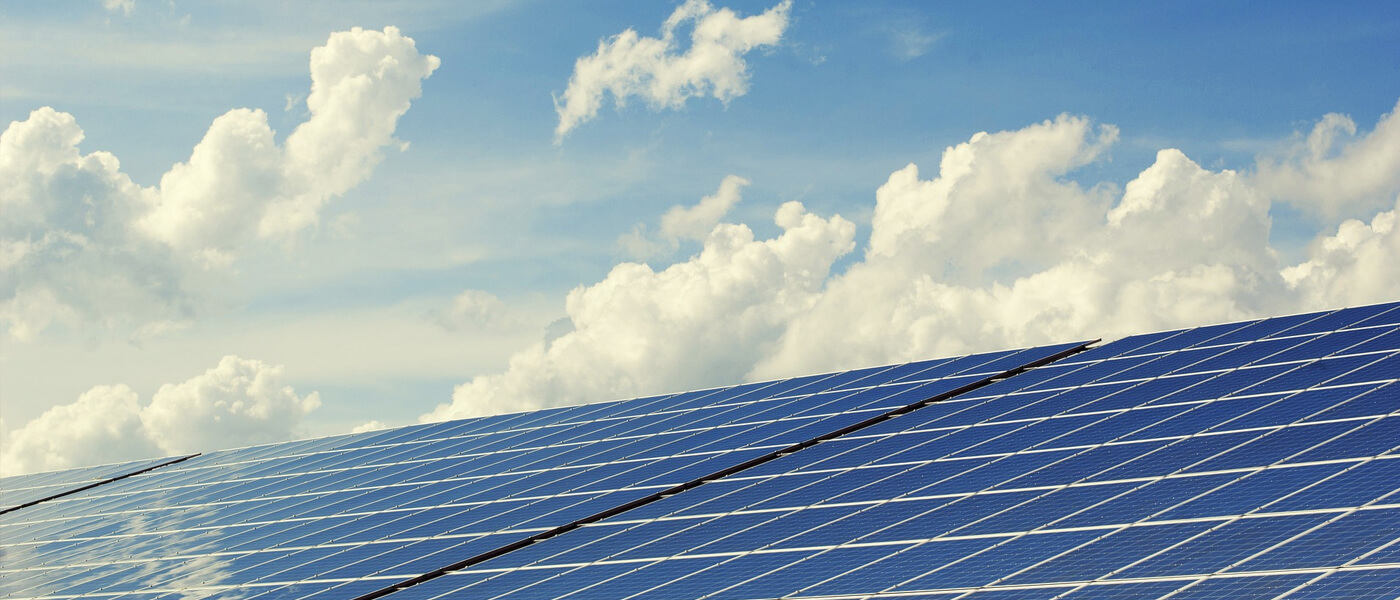
Every Singaporean knows that this little island of a little more than 720km2 has no natural resource on its own and relies almost entirely on imported energy like coal, oil, petroleum and natural gas.
Since the world outside of our borders is fraught with challenges that can dim our energy-driven future, Singapore must increasingly turn to clean and sustainable energy as part of our strategy to safeguard our prosperity.
These questions are therefore crucial:
- What happens when finite resources run out?
- How do we keep energy costs low in times of expensive oil and gas prices?
- Relying on sea lanes, what if our imports cannot get to us?
- What if our sources are not able or willing to export energy to us?
Becoming short-sighted, complacent in our energy generation and unprepared for future challenges and changes can make us vulnerable to forces that threaten our economy, social fabric, security and individual livelihoods.
Solar Energy A Bright Idea
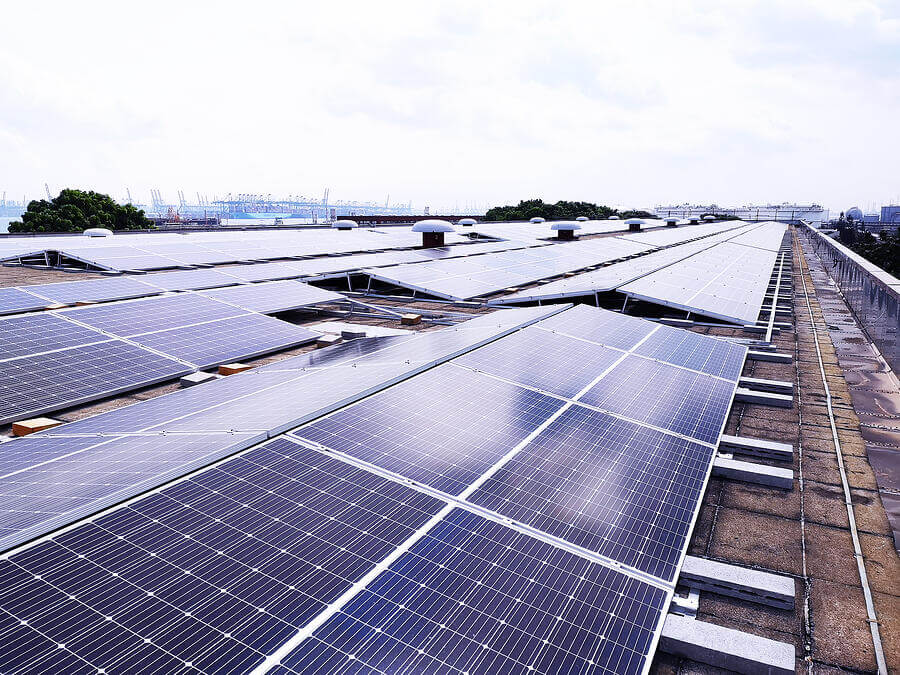
Singapore is quite an energy-thirsty city. According to statistics by the Energy Market Authority, we consume 49,643.7 GWh of electricity in 2018. In the same year, only 0.8% of all electricity generated came from solar energy.
A study by the Sustainable Energy Association of Singapore (SEAS) states that as much as 25% of Singapore’s energy needs can be met by solar energy by 2025. However, to achieve this, solar energy generation would have to grow twofold biannually, from generating 140 megawatt-peak today to 2 gigawatt-peak in 2025.
Such growth in solar energy adoption is only possible if Singapore is able to deploy solar energy technologies more innovatively and efficiently, overcoming the challenges presented by our limited landmass and solar intermittency (amount of sunlight that hit Singapore can vary over the day due to fluctuating solar output, clouds, haze, pollution etc.).
Despite the challenges of utilising solar energy, Singapore still sees a bright future with photovoltaics, taking advantage of our tropical climate, position near the equator and technological advancements in solar photovoltaic engineering. In fact, the government will be launching floating solar panel systems within our reservoirs to capitalise on any viable and available surface where solar farms can be housed at.
Contributing to Singapore’s growing energy independence, our parent company YTL PowerSeraya has been tapping into solar energy with solar photovoltaic panels installed at our Jurong Island plant. To further enable our customers to do their bit for the climate and pledge their support for Singapore’s renewable energy initiatives, our Get Sunny energy plan provides 100% clean energy.
Wind Energy Generation Is No Breeze, But Promising
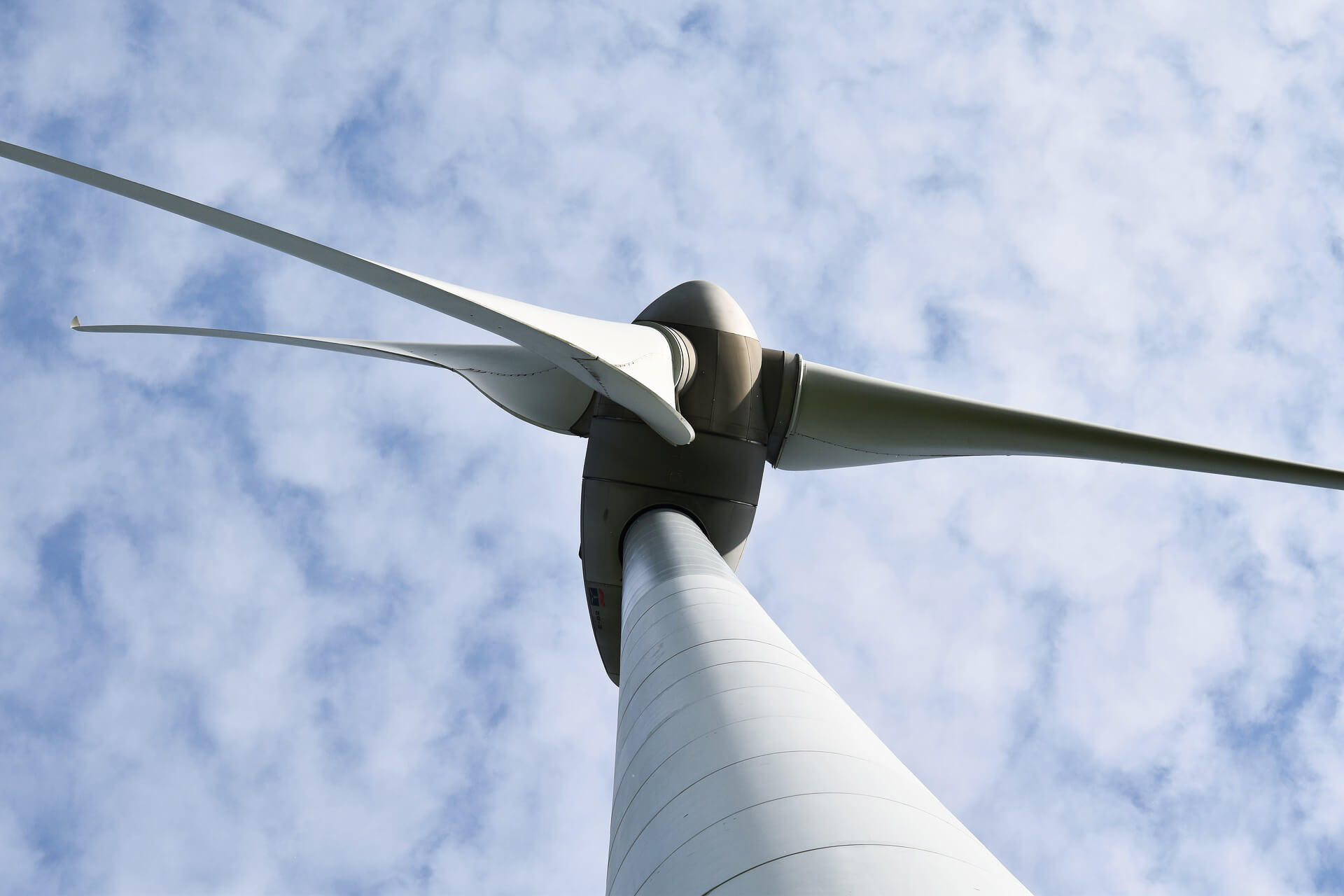
While all over the island experience abundant sunshine all year round, sufficient wind speeds and an army of wind turbines to make wind energy generation to help power the nation is still some ways away.
But it is not taking the wind out of the sail when it comes to testing its feasibility.
In 2017, a 14-storey high long-span wind turbine was erected over Semakau Landfill where it generates enough energy to power 45 four-room HDB flats a year. With its three 10.5 metre rotor blades, the turbine is sensitive enough to generate power with wind speeds as low as 3 metres per second.
Technology has yet to catch up in such ways that we will see a mass-adoption of wind energy generation to add to the national grid but the Semakau wind turbine keeps that possibility alive.
Putting The Smarts Into Smart Energy
Consistent with our Smart Nation initiative, energy companies here in Singapore are now deploying increasingly intelligent remote sensors, data analytics to predict demand and drawing closer to their customers through value-added applications in their bid to improve overall performance. These initiatives form part of Singapore’s investments in and harnessing of technology and innovations to meet energy demands and yet do so sustainably, for the present and the future.
The government has also set aside S$375 million for research, development and deployments in energy, with solar, energy storage, smart grids and environmentally friendly buildings as key focuses.
Beyond engineering science, Singapore is also leveraging on business science to encourage competition among energy companies so to spur innovation and efficiency.
Over the decades, competition in our liberalised energy generation sector has resulted in companies switching from fuel oil plants to the more efficient and cleaner natural gas plants (while gas is a finite resource, it is at the moment abundant in supply with more gas wells yet to be discovered). The liberalisation of the retail electricity market further energises the innovation and sustainability agenda as electricity retailers offer competitive price plans and green-packages to cater to consumers’ needs, preferences and stance on climate change.
Energy Security In A Changing World
Our growing thirst for energy will determine how our energy landscape transforms and how it transforms will translate to how we progress as a nation.
We have already witnessed how the global energy landscape experienced significant changes in the past decade, driven by advances in technology, geopolitical shifts and a worldwide paradigm shift in sustainability. In the same way how fuel oil plants made coal plants obsolete, improvements in fracking technology have heralded a golden age for natural gas over petroleum and renewable energy with its planet-hugging image is rapidly taking over the world.
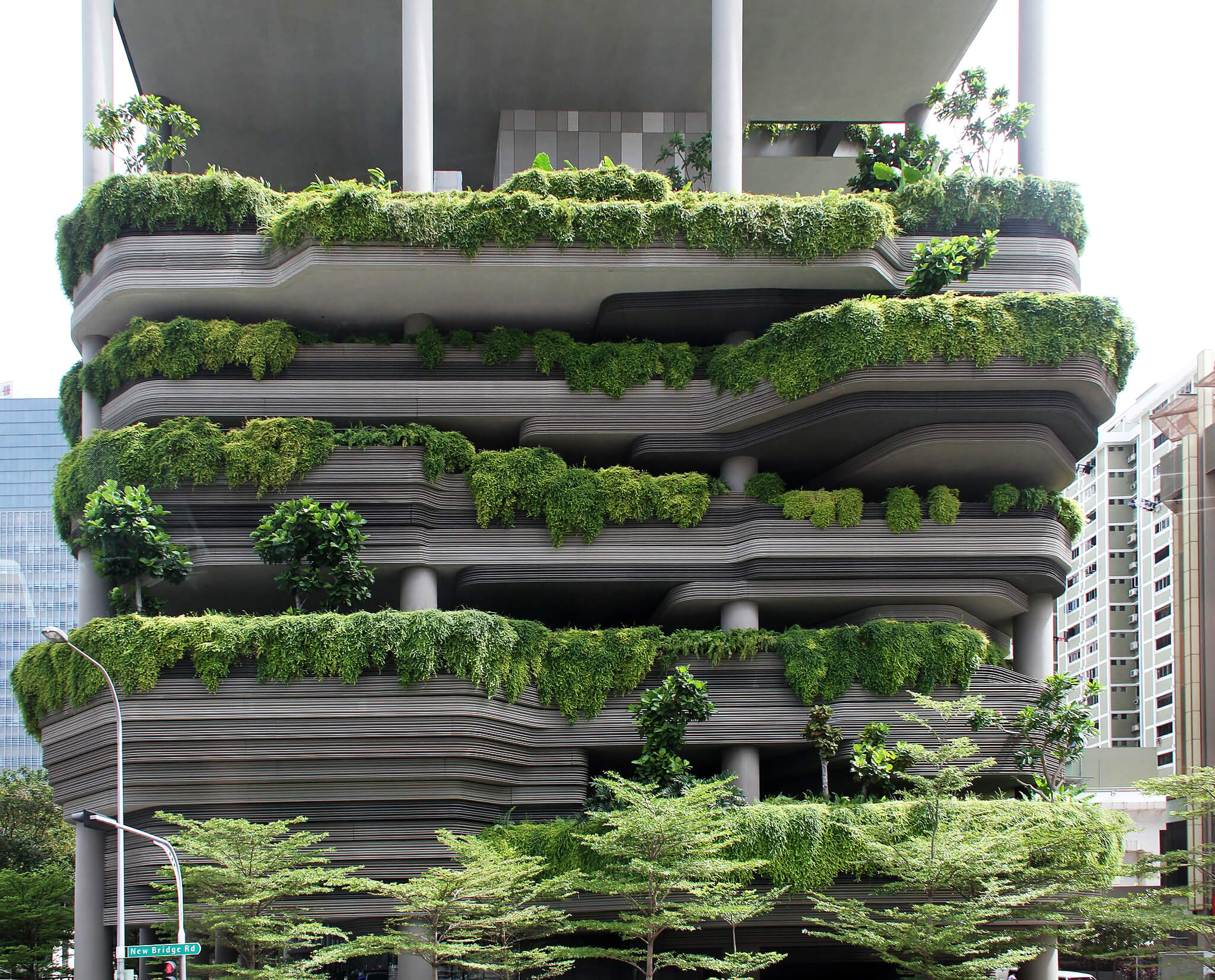
These changes can present challenges as well as opportunities. To ensure Singapore’s energy future stay secure, we ought to actively turn shortcomings and threats into advantages and opportunities that work for us, albeit sometimes uniquely, in ways that are competitive, reliable and sustainable.
In ways similar to how we achieve water security by diversifying our sources, i.e. import, rainfall catchment, desalination and NEWater, turning our sights on renewable energy could just be the answer to achieving energy security.
Start your sustainable journey with Geneco’s Get Sunny plan today.
References:
- Elangovan, N. (2020, June 5) Singapore households generated additional 1,334 tonnes of plastic waste during circuit breaker: Study, Today Online.
https://www.todayonline.com/singapore/singapore-households-generated-additional-1334-tonnes-plastic-waste-during-circuit-breaker
Image Credits: Nylon Coffee Roasters
Source: The Sustainability Project
SG National Day Series: Resource Defence Could Be Our Seventh Pillar Of Defence
- Home
- Articles Posted by (
- Page 10 )
[Post Date]
SG National Day Series: Resource Defence Could Be Our Seventh Pillar Of Defence
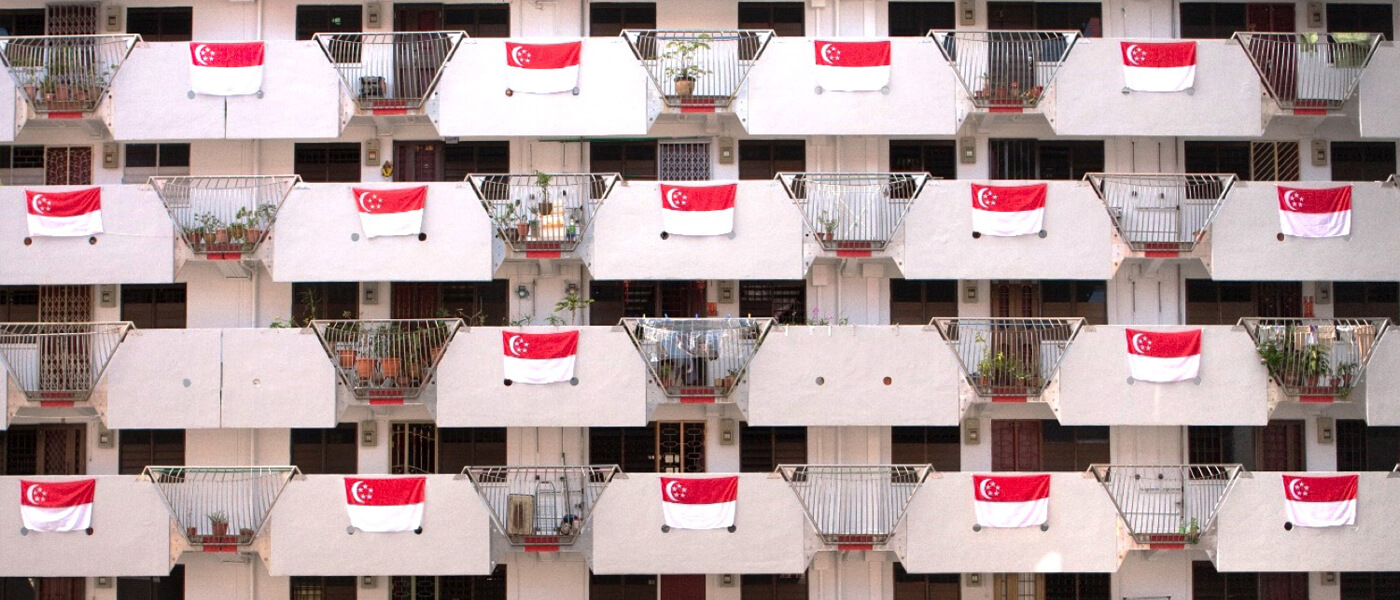
Any Singaporean should be well-informed on the island-state’s original 5 pillars of defence, with the sixth added recently by Defence Minister Dr Ng Eng Hen, that has essentially not only guaranteed our security as a nation but also our continued success.
As we take this National Day season to commemorate the Singapore Bicentennial, a look-back into our 700-year journey from a fishing village to the global city today, we ought to think about what we Singaporeans can do to ensure our prosperity can continue.
THE SIX PILLARS OF TOTAL DEFENCE

Celebrated yearly on 15 February, Total Defence traditionally comprises of Military Defence, Civil Defence, Economic Defence, Social Defence and Psychological Defence. The strategy is based on the understanding that hostile forces can attack us not just militarily, but also compromise our economic systems, social fabric and national morale. It also addresses the need to always be ready for mass casualty scenarios, whether man-made or natural. In 2019, a sixth pillar, Digital Defence, was added to address the new reality where future threats can and will come from the digital domain.
While we have robust assets in place to safeguard our sovereignty, what about the resources that power, quench and feed the country?
Defending Our Resources: Understanding Our Resources Are Not Finite
Anyone who has studied economics should know what scarcity means. It refers to the gap between limited resources such as food, water and certain energy sources and mankind’s limitless wants. Scarcity requires us to decide how to allocate available resources efficiently so to satisfy needs and as many wants as possible.
Sustaining any economy – and Singapore is an advanced one – requires large amounts of resources to upkeep the economic machinery and prepare for the future. Being feckless and squandering away precious resources can make Singapore vulnerable to an uncertain future and forces beyond our control.
Hence, resource defence will require us to adopt a responsible mindset to cherish the resources we have and not be wasteful.
Do Your Part For Resource Defence
Water
Water has always been one of the most, if not the most, important resource – and Singaporeans understand that.

California’s water crisis, Flint’s water contamination and Manila’s water shortage are some reminders that we cannot rest on our laurels. Weather, environmental and geopolitical causes will continue to present themselves as possible threats to our water security. Therefore, Singapore places great emphasis on water security by securing favourable agreements with our neighbours to ensure supply, maximising rainfall catchment, developing new technologies to generate freshwater, regulations on water usage and public education.
To help Singaporeans understand the importance of saving water, the Public Utilities Board details how you can save every little drop and achieve sustainability.
How you can save water:
- Turning off the tap when not in use, even if it’s for a few seconds, goes a long way towards saving water and your bills. Imagine how much you can save over a year! Fixing a leaky tap can also save you what could be 60 litres a week.
- Keep your showers short and opt for an efficient showerhead to maximise your time in the bath.
- Only wash a full load of laundry!
- Get a dual-flush toilet where you can choose to use less water to do minor flushing.
Electricity
Necessary to power any country’s infrastructure – from streetlamps to transportation to homes, the resources and technology that generate electricity such as natural gas, oil, and renewable sources like water, wind and solar needs protection too. Besides, when we use electricity responsibly, we help to use our sources efficiently, keep the costs of generation low and reduce pollution and other environmentally harmful emissions.
Over the years, Singapore has been exploring adopting renewable energy technology to do its bit for the environment as well as tap into infinite ‘free’ energy like solar and wind. However, as they can incur high costs to develop and deploy, responsible consumption is still needed to keep renewable energy sustainable.
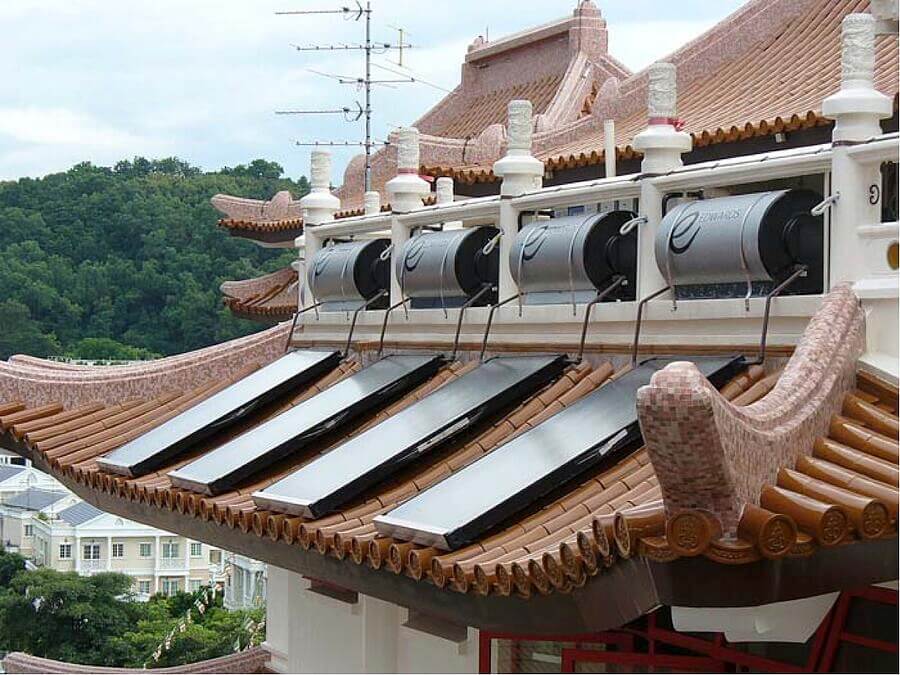
Saving electricity can be easy and less disruptive to your comfortable lifestyle. Read our article here on how you can adopt some of our Green Tips!
Food
Unlike countries with larger landmass, agriculture in Singapore cannot feed the population sufficiently and so we import most of our food. With climate change that threaten our food sources, rising food costs and the dependence on economic and social stability in countries from whom we import from, we need to adopt and maintain a responsible mindset for food as well.
Food waste has become a global crisis and Singapore’s food waste account for more than 20% of our annual total waste – and the number is growing. Not only does it strain the environment as we demand more from the land, but we also cause economic and social strain when food costs go up and people struggle to afford basic meals.
Eat what you need, shop smart, save what leftovers you can and repurpose discards into compost and you can not only keep your costs low but also do your bit for the environment!
Start your sustainable journey with Geneco’s Get it Green plan today.
References:
- Elangovan, N. (2020, June 5) Singapore households generated additional 1,334 tonnes of plastic waste during circuit breaker: Study, Today Online.
https://www.todayonline.com/singapore/singapore-households-generated-additional-1334-tonnes-plastic-waste-during-circuit-breaker
Image Credits: Nylon Coffee Roasters
Source: The Sustainability Project
SG National Day Series: Cleaning Up Our Energy History For A Greener Future
- Home
- Articles Posted by (
- Page 10 )
[Post Date]
SG National Day Series: Cleaning Up Our Energy History For A Greener Future
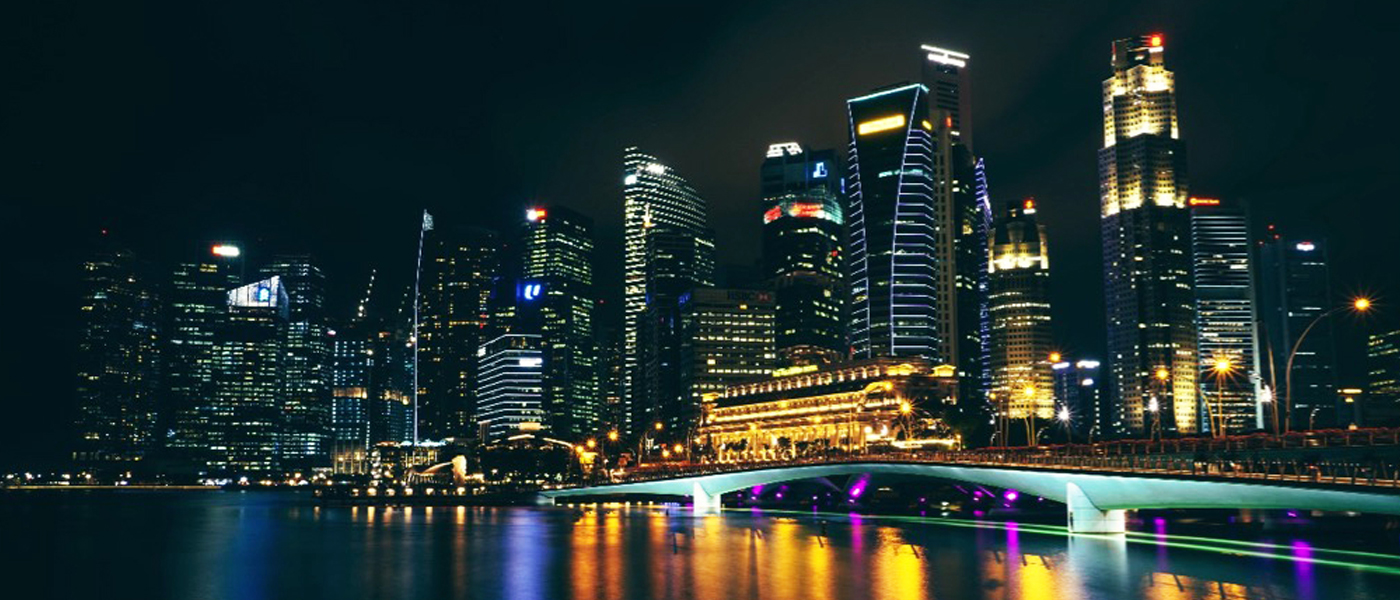
With all 5.6 million inhabitants celebrating the island’s 700-year transformation at the Singapore Bicentennial and the SG50 party still fresh in our memories, we think we ought to be proud of our energy evolution over the years since independence, the forward thinking that powers it, and how we are punching above our weight in the climate change fight.
From a time where St. James Power Station was the sole coal-fired power plant to the Pasir Panjang Power Station fuelling Singapore’s post-war industrialisation, and eventually to today’s 14 plants that power our advanced economy, the little red dot has come a long way in energy security and sustainability.
Our Solid Improvements For Cleaner Energy Generation
The history of our energy sector, while remarkable, was dark and “sooty”.
Not only were there frequent outages that plunged the island into darkness in what was said to be “Singapore’s greatest civic problem” in the pre-60s, coal-fired plants were inefficient, polluting and environmentally unsustainable. Although the more efficient oil-fired plants were subsequently added into the grid, pollution was still an issue.
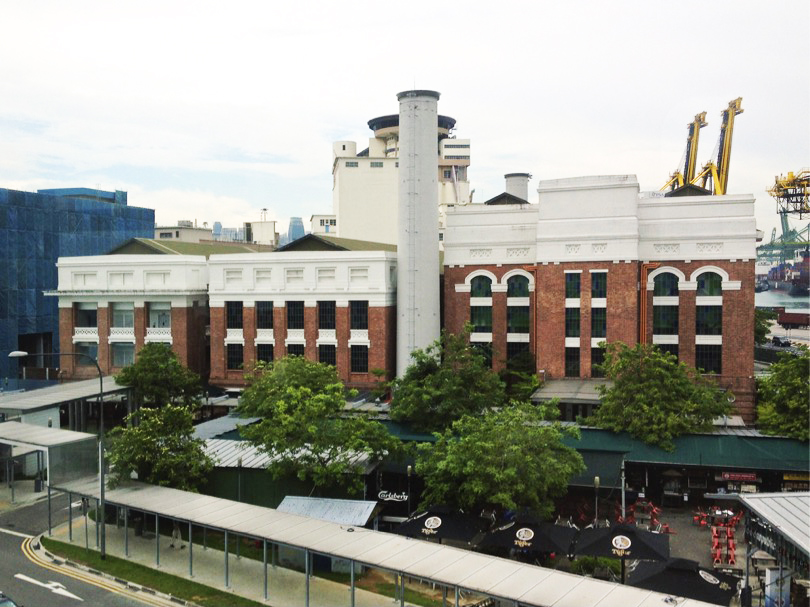
Before St James Power Station became a nightlife spot, it was Singapore’s only power plant from 1926 to 1952.
While the grid stabilised over the succeeding years, Singapore needed a cleaner and more efficient option.
In 1991, Singapore began adopting natural gas solutions to power a new phase of electricity generation, in what was then the beginning of a gradual weaning of the more-polluting coal and oil.
Natural gas outshone traditional coal and oil in many ways:
- It produces much less soot than other fossil fuels since its by-products are gaseous and it burns cleaner than coal (45% less CO2), gasoline and diesel (30% less CO2).
- It is abundant in supply and more sources are yet to be discovered. However, it is nonetheless not infinite.
- It is cheaper since natural gas boasts of superior energy efficiency, from its price to the technology involved in using it.
- Transportation is easier as it can be transported via ships, tankers and pipes. Its lighter weight meant transportation is easier and generate less carbon footprint. Liquefying natural gas meant vessels can transport up to 600 times more in volume than its gaseous state, boosting efficiency.
Today, Singapore’s power generation consists of a mix of sources, dominated by natural gas and followed by others such as cogeneration, desalination, oil, diesel and waste-to-energy.
Carbon-neutral Energy: The New Phase Of Singapore’s Energy Consumption
The liberalisation of our energy sector as part of Singapore’s evolution as a country not only brought cheaper options for the population, but it also made net-zero emission possible for the environmentally-conscious individual. Being a citizen of Singapore, the global city, meant that it is also our responsibility to care for the environment, the climate and the planet.
Contrary to popular belief, carbon-neutral energy (CNE) is not synonymous with green or renewable energy. As various generators in Singapore produce electricity to the grid, retailers like us cannot channel 100% renewable energy to homes and businesses.
However, as CNE involves purchasing carbon offset credits that fund anti-climate change efforts around the world, you can use electricity without contributing more carbon into the atmosphere. Instead, we can purchase carbon offset units that are equal to the amount of carbon emitted by the energy produced for consumption. Read more about what CNE is here.
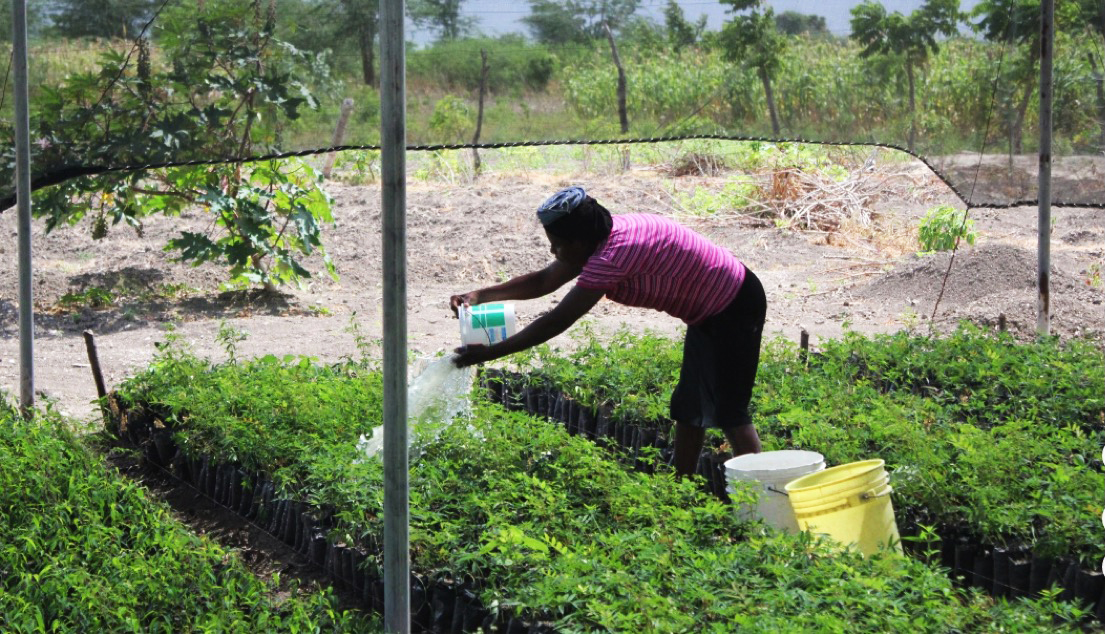
Funds from selling carbon offset units support carbon-tackling efforts around the world, such as reforestation.)
Why Carbon-neutral Energy?
By using CNE, you will not be contributing more carbon into the atmosphere and may even achieve negative carbon emission in which your offset units support highly effective projects that help remove more carbon than is generated.
The future of our climate is not just for governments and businesses to defend nor should it be delegated to some green champion; every individual needs to take up the stewardship by accounting for our carbon emissions and take steps to reduce them.

Purchasing CNE helps to power your lifestyle without adding to climate change.
While you may be recycling every single paper receipt and composting every grain of uneaten rice, it is practically impossible to achieve absolute zero carbon emission if the electricity that keeps your lights on is not neutral. Subscribing to CNE is a practical and affordable way to ensure you have all your environmental bases covered.
Start your sustainable journey with Geneco’s Get it Green plan today.
References:
- Elangovan, N. (2020, June 5) Singapore households generated additional 1,334 tonnes of plastic waste during circuit breaker: Study, Today Online.
https://www.todayonline.com/singapore/singapore-households-generated-additional-1334-tonnes-plastic-waste-during-circuit-breaker
Image Credits: Nylon Coffee Roasters
Source: The Sustainability Project
How to pay Geneco Bill: 4 ways to pay your bills on time
- Home
- Articles Posted by (
- Page 10 )
[Post Date]
How to pay Geneco Bill: 4 ways to pay your bills on time

Did you know there are 4 fuss-free ways to pay your Geneco bill?
1. Credit or Debit Cards
One of the best things about the Open Electricity Market is you can now choose to pay your electricity bills by credit card or debit card. It’s not only convenient, you also earn cash rebates or air miles, boosting your savings even further
And if you set up a recurring payment,you don’t just have to worry about paying your bills on time, you can also take advantage of the various credit card promotions being offered by participating banks. Head over to our ongoing promotions find out more.
2. Recurring payment via GIRO
You can continue using GIRO too. Set up your GIRO payment on our Self-Service Portal.
If your bank of choice for GIRO payment isn’t listed on our Self-Service Portal, download a form here and send it to us with the details required. We’ll sort it out for you!
3. Payment via AXS
Geneco bills can also be paid at all AXS machines. Just use your phone to scan the bar-code on the bill – Just make sure that you zoom to the bar-code on the bill.
Or use the eAXS web portal on your desktop or mobile devices.
The benefit of AXS? You can pay all your utility bills in one go!
4. GrabPay
GrabPay is our latest and exclusive payment option in our Self-Service portal. Head over to the One Time Payment page on the Self-Service portal and you will be directed to Grab’s dedicated page to make your payment!
Wonder why your electricity consumption seems higher? Find out 3 reasons why your consumption might be higher.
References:
- Elangovan, N. (2020, June 5) Singapore households generated additional 1,334 tonnes of plastic waste during circuit breaker: Study, Today Online.
https://www.todayonline.com/singapore/singapore-households-generated-additional-1334-tonnes-plastic-waste-during-circuit-breaker
Image Credits: Nylon Coffee Roasters
Source: The Sustainability Project
How food wastage is a silent and looming global crisis
- Home
- Articles Posted by (
- Page 10 )
[Post Date]
How food wastage is a silent and looming global crisis

Researchers are warning of an impending crisis that could see global food waste rising by approximately 30% by 2030, bringing the total amount to more than 2 billion tons of discarded scraps. The crisis, described as ‘staggering’, is seen to be exacerbated by a worldwide population boom, rising incomes, changes in lifestyle habits and a growing disassociation from the food supply chain.
Although the United Nations has taken the first step by targeting to halve the number by 2030, a study by the Boston Consulting Group (BCG) revealed that the food waste mountain is only going to reach new heights if nothing more is done to address the current situation.
The report predicts that global food waste will reach 2.1 billion tons – worth US$1.5 trillion – every year, presenting serious economic, social and environmental issues, with the implications to grow in magnitude as the trajectory goes unchallenged.

Food supply chains feel the heat as the need for better food management is demanded.
Burgeoning Waistlines, Populations And A Climate Crisis
As we fight food waste, we are also addressing hunger, poverty and climate change.
Every year, we discard about 1.6 billion tons of food worth approximately US$1.2 trillion and the numbers are not going down. To feed today’s world inhabited by more than 7 billion people, about 6 billion tons of food is being produced every year. According to the UN’s Population Division, the world’s population is projected to reach up to 9.7 billion people by 2050, and food demand will put even more pressure on the supply chain. And we have not yet factored in changes in people’s diets.
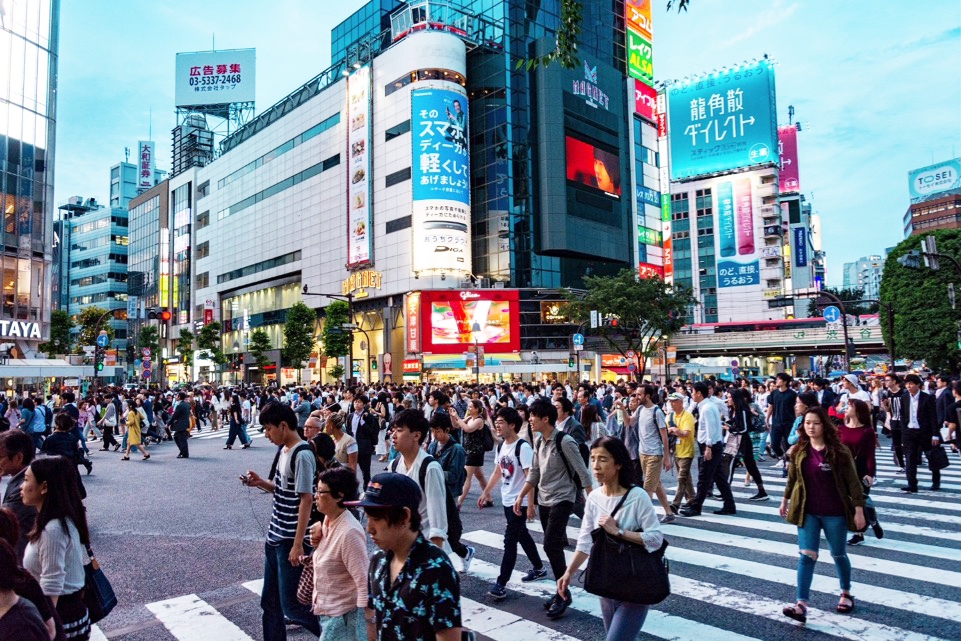
As population grows, global appetite grows as well, fuelled by the rise in incomes.
With a burgeoning human population set to top 11.9 billion people by 2050, with the greatest rise among the developing nations, food producers are under pressure to produce more and put even greater strain on the environment. As consumers from developing nations experience growth in wealth and disposable income, the report expects an uptick in the amount of household waste that will be generated over the years.
Food wastage also squanders precious resources such as freshwater, land, energy, labour and capital, and produces resultant greenhouse gas emissions that accelerate climate change. As demand for food grows, converting forests and woodlands into farms threaten to reduce carbon stores that keep global warming at bay.
Food For Thought On Food Waste
- About one-third of the food produced in the world for human consumption every year
- Food losses and waste costs the world about US$1.2 trillion
- Both industrialised and developing nations dissipate about the same amount of food at 670 and 630 million tons, respectively (basically, it refers to developed countries like USA, Germany, France etc. collectively consume and waste just as much as food as the total amount by developing countries like Cambodia, Vietnam, Afghanistan etc.)
- Plant-derived food items experience the highest wastage rates
- Annually, consumers in wealthy nations waste as much food as the amount sub-Saharan Africa produces
- Large quantities of food are discarded simply because of the over-emphasis on appearance
Moving The Food Waste Mountain Starts With The First Rock
Fighting the food waste crisis will require all segments of society to pitch their commitment, talent and technology together, from national policies to corporate social initiatives to the everyday actions and mindsets individuals like us can adopt.
One such mindset is to see the beauty that is beyond skin-deep.
UglyFood, a local business founded in 2017, “rescues “ugly” or unsold fresh produce” to give these about-to-be discarded food items a new lease of shelf-life by procuring such items to make juices, sorbets and teas. Through months of research, the founders discovered that fresh produce that is not as visually appealing tend to be perceived as undesirable by shoppers. Rather than let these otherwise just as good quality produce go to waste, the social enterprise buys them over and repackage them into higher-value products.
At home, you can adopt their ideas by juicing your browned bananas and bruised apples, make soup and sauces with vegetable trimmings, and broths with unwanted meat trimmings like tendon, sinews and bones.
Another enterprise that makes food rescue its mission is The Food Bank Singapore.
Food companies often toss food for trivial reasons, such as fast-approaching best-before dates, labelling errors on packaged foods, surplus harvests or purchases and over-production.
The Food Bank Singapore invites companies looking to remove such products to donate them to its storehouses instead so that the food can be “distributed to food aid agencies which could be private or public, religious or secular.”
Find out more about how everyone, from government agencies to enterprises to home cooks can adopt food-saving practices here!
Start your sustainable journey with Geneco’s Get it Green plan today.
References:
- Elangovan, N. (2020, June 5) Singapore households generated additional 1,334 tonnes of plastic waste during circuit breaker: Study, Today Online.
https://www.todayonline.com/singapore/singapore-households-generated-additional-1334-tonnes-plastic-waste-during-circuit-breaker
Image Credits: Nylon Coffee Roasters
Source: The Sustainability Project
The food waste fight – starting with your daily grind
- Home
- Articles Posted by (
- Page 10 )
[Post Date]
The food waste fight – starting with your daily grind

Coffee – the office worker’s best friend, the freshmen’s newfound religion, the medium for the occasional meetup and an essential conversation topic any self-professed hipster must be able to carry.
Regardless of how we relate to the black, aromatic liquid, coffee is all around us and its impact on modern society is profound. However, beyond being the invisible lubricant in our economic machinery, ensuring our diligent workforce can stay hyper on the proverbial hamster wheel, coffee has also found its place in the sustainability movement.
Paying heed to our food waste problem, we have the world’s favourite beverage in our sights.
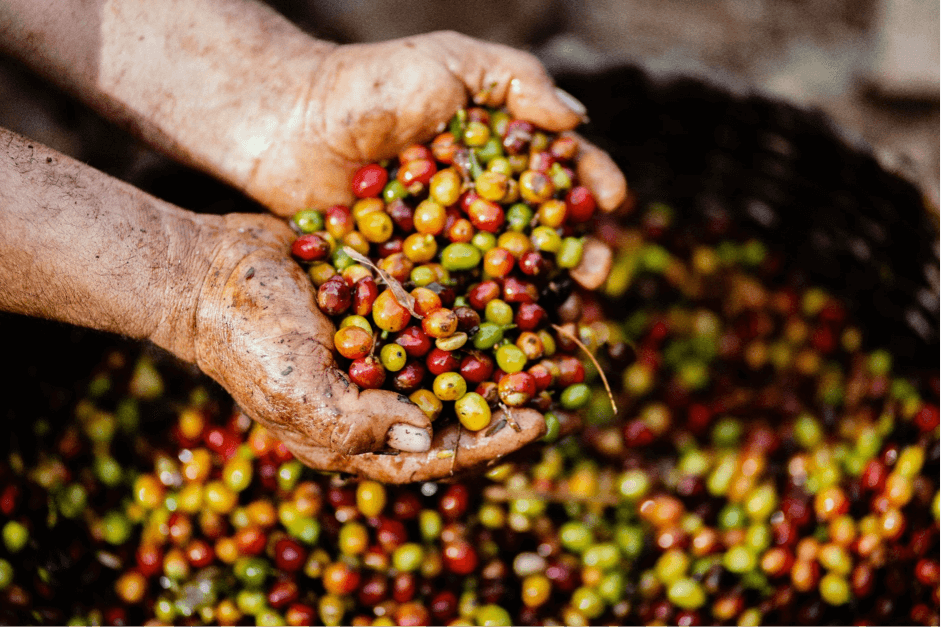
According to research, only 6% of the entire cherry is used to make a single cuppa. The rest? Discarded.
The Darker Shade Of Your Long Black
Around the world, we gulp down about 10 million tons of coffee a year. To put it into perspective, that would make 1 trillion cups of coffee (assuming all coffees are drunk as espressos with each shot using 10 grams of coffee beans).
While your morning cappuccino can help you see the bright side of life for the day, such statistics also carry with it the dark side of the story – any kind of production causes ecological impact; consuming 1 trillion cups of coffee can and will generate a lot of food waste.
According to research by Colombian coffee logistics firm Almacafé, only 6% of the original coffee cherry is used to make a cup of coffee; only the seed is used, while the flesh and skin are simply discarded and will serve no other purpose in the coffee trading cycle.
Turning Black Into The New Green
Not all of it is doom and gloom, though. Such gargantuan scale of consumption also represents environmental opportunities of equal, if not greater, value. In recent decades, used coffee grounds have been included in the growing list of items to fuel the 21st century circular economy.
In an article published by CNA Lifestyle, homegrown vertical farm Sky Greens partnered Nespresso to recycle used coffee pods into fertilisers and organic compost. In an article published earlier this year by TODAY, scientists at Nanyang Polytechnic turned the world’s favourite drink into the world’s favourite material – plastic. A biodegradable kind, at that.
However, recycling used coffee grounds need not be reserved for geeky scientists, Nobel Prize laureates nor farmers from the future. There are many ways we coffee lovers can do our part to help keep the coffee industry’s waste footprint at a minimum.
Initiatives From The Ground Up
The advent of sustainable living and mindful eating lifestyles have made us pay more attention to where our food comes from and how they are produced.
Buying coffee that is Fairtrade-certified not only ensures farmers are fairly compensated for their noble work in upkeeping our unashamed dependence on caffeine, but we are also ensuring the coffee we buy are grown with sustainable and eco-friendly practices. Other such labels include “UTZ Certified”, “Common Code for the Coffee Community (4C)”, “Rainforest Alliance” and others. Certain coffee brands like Starbucks and Nespresso have their own internal certifications as well.
Getting your coffee beans from Fairtrade-certified sources is only half the battle won; the waste created from consumption still needs to be addressed by the end consumer.
The next time you brew yourself a cuppa, do not hurry to chuck the used grounds into the bin just yet; they can be repurposed in various ways:
As compost
Plants are coffee-guzzlers like us. Used coffee grounds can add nitrogen, potassium and magnesium to the soil, making it a good. The rough consistency of the grounds is also useful for keeping the soil loose, helping to promote soil aeration.
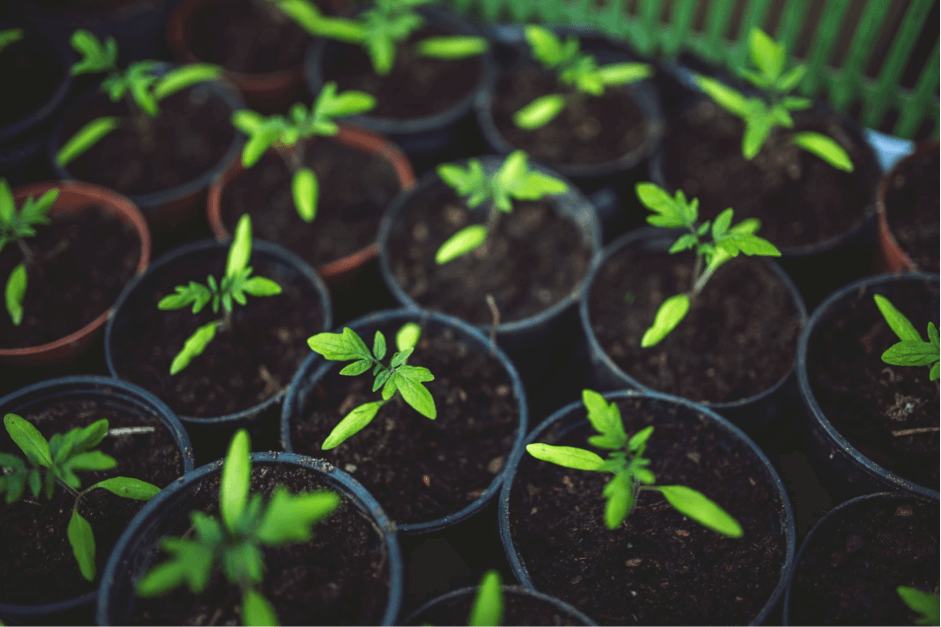
Used coffee grounds add various nutrients to the soil, and its consistency promotes soil aeration.
As pest repellent
Garden pests like ants, snails, and slugs dislike coffee since compounds such as caffeine and diterpenes in coffee are toxic to them. Coffee grounds are also useful for warding off mosquitoes, fruit flies and beetles. Stir together coffee grounds, dried orange peels and/or rosemary for a pleasant-smelling pest-buster kit.
As portable deodorants
Thanks to its nitrogen compounds, coffee is adept at absorbing odours. Spread out and dry the grounds in the oven, pack it in new tea paper filters as handy deodorants for old socks, refrigerator, shoes and bags.
Start your sustainable journey with Geneco’s Get it Green plan today.
References:
- Elangovan, N. (2020, June 5) Singapore households generated additional 1,334 tonnes of plastic waste during circuit breaker: Study, Today Online.
https://www.todayonline.com/singapore/singapore-households-generated-additional-1334-tonnes-plastic-waste-during-circuit-breaker
Image Credits: Nylon Coffee Roasters
Source: The Sustainability Project
Why you should pay heed to our growing food waste
- Home
- Articles Posted by (
- Page 10 )
[Post Date]
Why you should pay heed to our growing food waste
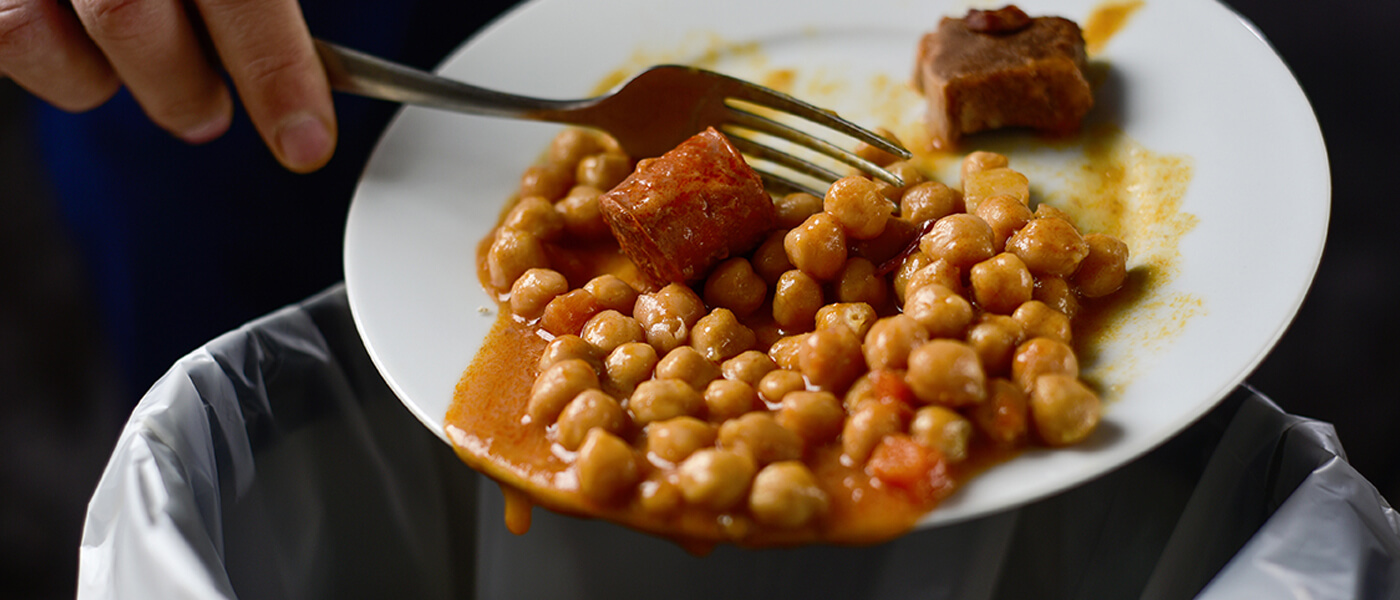
When you were still a little kid, you might have been warned by Mom that unfinished food will cause you and/or your future spouse to develop some unwanted “physical characteristics”.
All grown-up and now a little smarter, we know it to be bollocks, nothing but old wives’ tales to scare us into licking our plates clean.
However, the real consequences of unchecked food wastage are more serious than blemishes on the face.
Local Food Waste Trend Unsavoury
We are all at some point guilty of consciously tossing food into the trash. Whether it is buying a 2kg birthday cake for 5 people, ordering a 5-course dinner to impress a date despite being half-full with kaya toast from tea-time, picking out the carbs to maintain weight goals, or even buying a large variety of dishes from the hawker centre just to taste a little of everything, we are very much capable of trivialising the impact of our wastage.
According to the UN, about 1.3 billion tons of food produced around the world is wasted every year.
In Singapore, food waste generates one of the largest amounts of waste with no downward trend in sight, according to a National Environment Agency report.
Over the past decade, our food waste has risen 30% from 568,000 tons to more than 739,000 tons in 2018, accounting for 20% of total waste generated. Only 16% of all food waste gets recycled.

F&B establishment face increasing pressures to compete, often on portion value
Countering Food Waste
Over the years, community and national partners have sprung into action to turn what was once a man’s trash into another’s treasure.
Since 2014, local supermarket chain NTUC FairPrice created a framework that involves the community and partners to enhance internal processes, educate the public and form waste reduction partnerships.
Some food establishments, such as two food centres in Ang Mo Kio and Tiong Bahru, have designed a food waste recycling system that turns discarded food into compost for gardening.
Some shopping malls, such as Jem and Parkway Parade, have adopted systems that convert food waste into compost using anaerobic biodigesters for landscaping or non-potable water usage.
Other commercial and industrial premises like hotels, schools and municipal buildings have acknowledged the need to respond to food wastage; many of them have now adopted on-site food waste practices and management solutions in a bid to reduce their footprint.
Good Solutions, But No Panacea
When it comes to wastage, while noble solutions can turn the tide, addressing the problem after the waste has been created is no permanent remedy. The issue of overconsumption, not just on food but also other resources such as electricity and clean water, needs to be addressed from the ground up.
We need to step up on educating the public to adopt a zero-waste mindset, be mindful of our resource consumption and maintain a sensible rationing mentality. For this, we have as a collective started to create awareness about sustainable living and draw people into our green camp, beginning with homes, workplaces, schools, and food establishments.
Ultimately, to become an advanced and resource-efficient nation, all hands will need to be on deck – government, businesses and down to the individual consumer – to embark on a concerted effort towards maximising our resources, extending the utility of our excesses and repurposing our wastes.
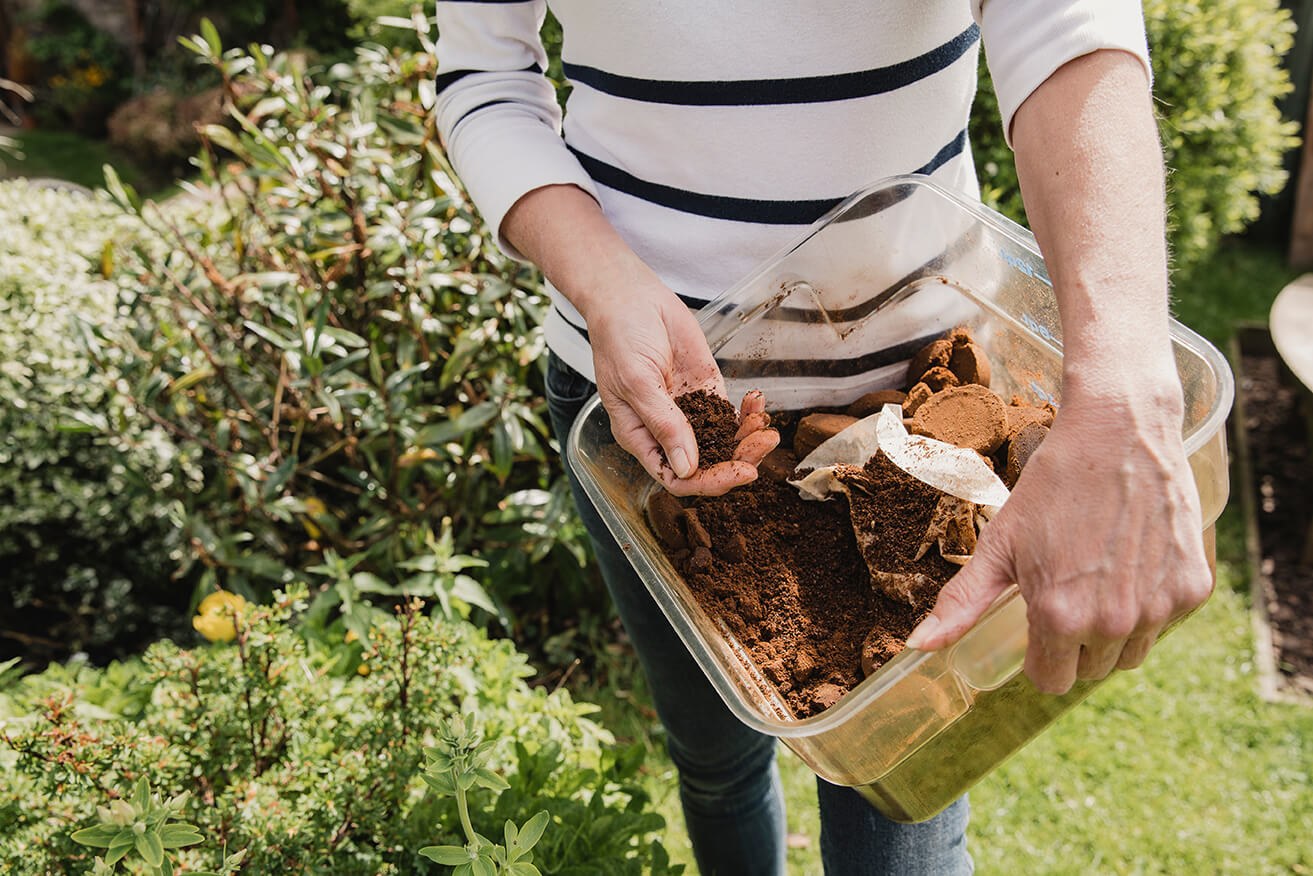
Converting food waste into compost is one way of repurposing what would have ended up in a landfill
How We Can Do Our Part
At Geneco, we believe combating big issues like wastes, environmental conservation, social responsibility and climate change involves every single man on the ground.
Here are four simple ways you can adopt to make the change and help reduce food wastage:
1. Shop smart and realistically
Simple, but all things start with the basics. When you go grocery shopping, make sure you don’t buy too much food. Think carefully and write a list of what you really need for tonight’s dinner, down to the portions and recipe. Head to the store and buy only what you have written.
2. Don’t over-serve food
Yes, we know you are generous, but serving too much food does no one justice either. If you are unsure how much food to serve, you can try applying recommended diet guidelines into your recipes. Using smaller plates can also help. Over time, you will get better at it.
3. Save and eat leftovers
You do not have to feel shame eating leftover food (not spoilt ones, of course). After all, some ‘leftover’ food like cheeses, yoghurts and even tofu become known as delicacies. Save uneaten dinner for breakfast tomorrow or ‘tapao’ if you eat out. Refrigerate or freeze when appropriate.
4. Try composting, but only as the final measure
Turn your discards into compost! But do this as the final measure, since combating food wastage should start as early up the line as possible, and it is just a neat safety net to keep food away from the bin and do something good with them.
Start your sustainable journey with Geneco’s Get it Green plan today.
References:
- Elangovan, N. (2020, June 5) Singapore households generated additional 1,334 tonnes of plastic waste during circuit breaker: Study, Today Online.
https://www.todayonline.com/singapore/singapore-households-generated-additional-1334-tonnes-plastic-waste-during-circuit-breaker
Image Credits: Nylon Coffee Roasters
Source: The Sustainability Project
